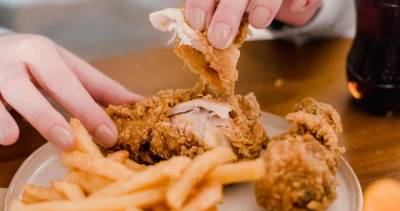Remember the Stanley Park Zoo?
A recent bike ride through Stanley Park dislodged a long-forgotten memory: Didn’t this place once have a zoo?
An abandoned cement structure that was once home to captive polar bears is all that remains of the once-flourishing Stanley Park Zoo. Kids today won’t be able to recognize the empty concrete compound (back then called the polar bear grotto) as the one-time main attraction, but anyone who grew up in Vancouver up until the mid-1990s will remember the zoo and its animals—and its animal rights offences.
The zoo officially closed in 1997, but it all began more than a century before that, when Stanley Park’s first-ever superintendent Henry Avison captured an orphaned black bear cub and chained it to a stump in 1888. The cub was the first wild animal to be exhibited at the park, turning it into a “pound” of sorts for orphaned and donated animals; by 1905, the “pound” has amassed a few other donated species: a monkey, a seal, four grass parakeets, a raccoon, and a canary.
In the early 1900s, the “pound” had turned into a full-fledged zoo that was home to more than 50 different animal species from around the globe, including monkeys, seals, emus, bison, kangaroos, and pelicans. It picked up even more steam with the construction of the aforementioned polar bear grotto, which was initially home to four bears—Nootka, Jubilee II, Prince Rupert, and Princess Rupert—and a gaggle of Humboldt penguins.
While the zookeepers’ intentions may have been grand (and good), things were a lot murkier in reality. In a National Film Board documentary (NFB) short from 1953, a zoo superintendent admitted that it was difficult for cold-climate creatures like the penguins to adapt to Vancouver’s temperate rainforest; he also said that instead of their natural food intake of a million ants a day, giant anteaters were given a “substitute diet of dog food and canned milk.” Further to that, he acknowledged that they had to “experiment” in order to find suitable substitute foods for many of the foreign animals. Yikes. In other film clips, large grizzly and polar bears are shown to be kept in extremely small cages.
The second—and probably most famous—orphaned bear came to the zoo in the ‘60s: a polar bear named Tuk, who lived out the rest of his life in the grotto (even after the zoo had been shuttered). Tuk is featured in another NFB short, an animated film from 2018 simply called The Zoo, which follows the parallel lives of the polar bear cub and a boy who visits him over the years.
Despite more than a century of success, the zoo was, of course, questioned by animal rights activists and the general public over the ethics of keeping wild animals in captivity. (After all, the park was full of its own native wildlife—namely a cougar—that was blamed for the killings of some of the captive animals.) Without proper onsite care, rehabilitation programs, or educational aspects, a zoo is just another commercial enterprise—one that comes at the very high cost of animal welfare.
In 1994, the issue came to a head when residents voted to close the zoo. Animals were then moved to the petting zoo in 1996, or donated to the Greater Vancouver Zoo in Aldergrove—except for Tuk, who died in 1997, alone, in the grotto.
These days, Stanley Park is host to many native critters and predators who are not on display, like coyotes, blue herons, beavers, squirrels, and raccoons.
As for the abandoned polar bear grotto, its fate remains unknown. Many folks have presented their own ideas for how to revive it, from a “polar bear sauna” to a performing arts stage to a salmon hatchery. Regardless of what it becomes, if anything at all, it remains the last relic of a very different era.















Comments